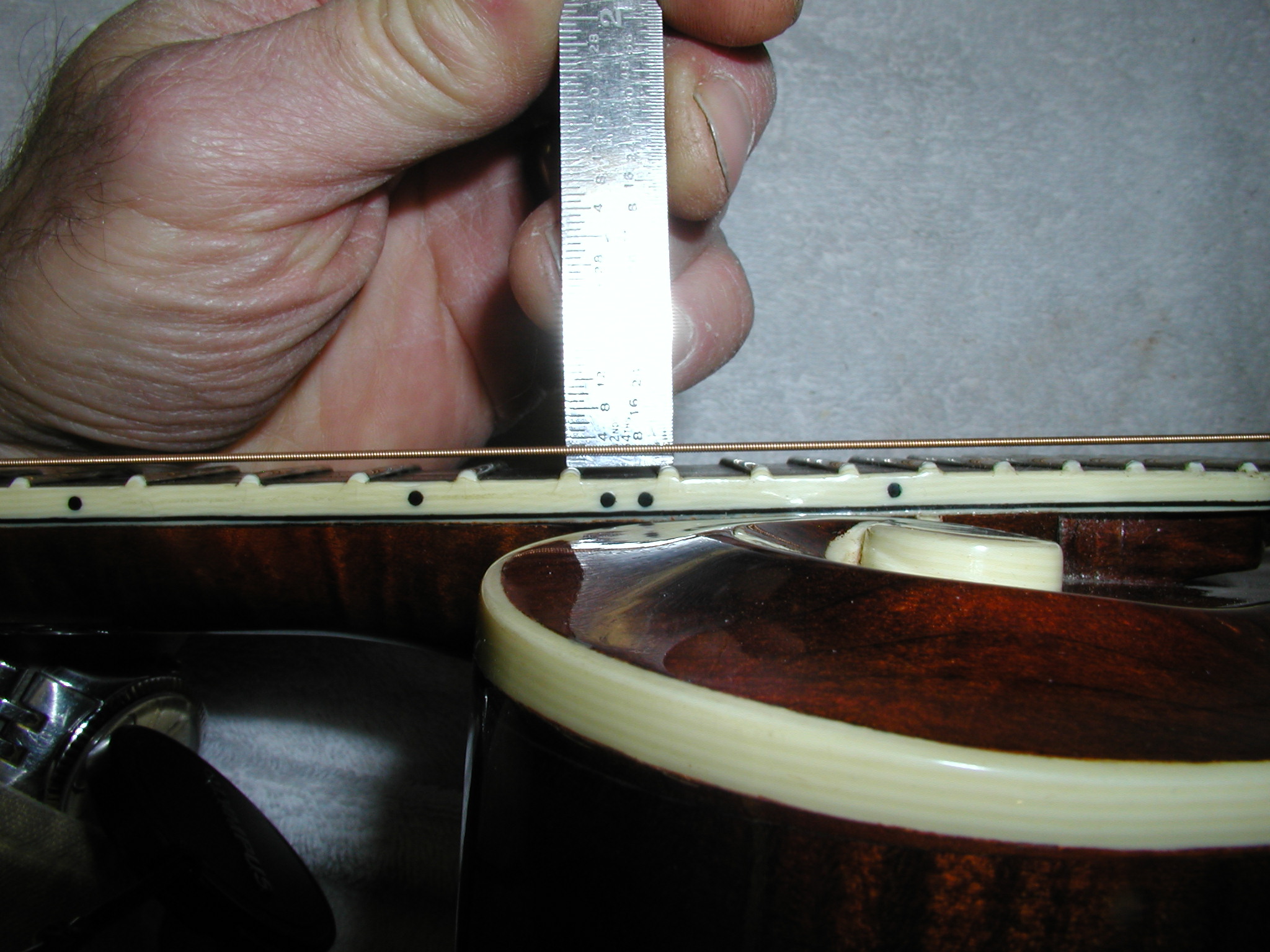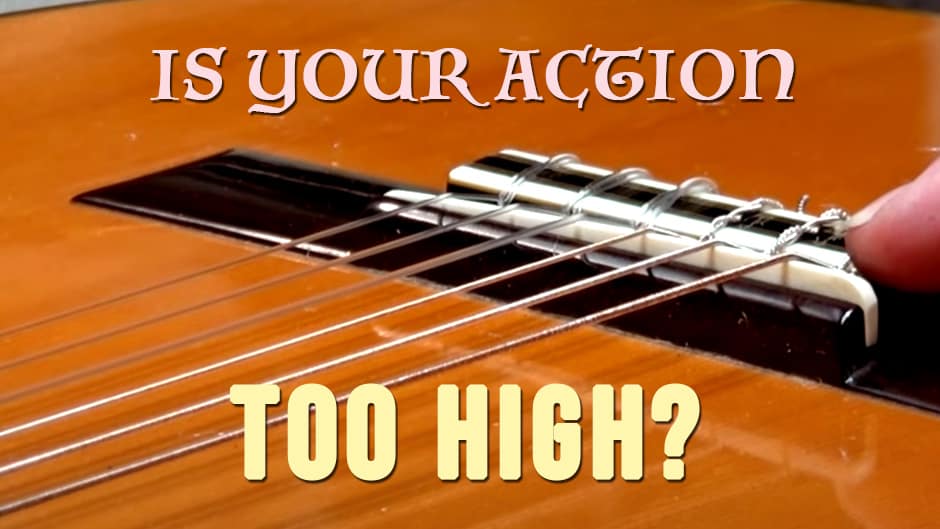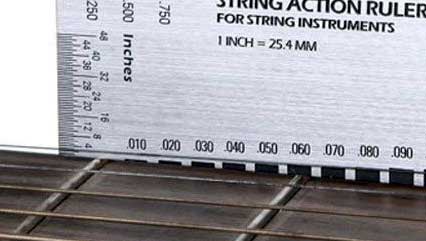


Īction on a guitar is usually measured at the 12th fret. Tightening the truss rod bends the neck backwards, lowering the action-and loosening the rod lets the neck bow forward, raising the action. The action on a guitar is also slightly affected by the adjustment of the truss rod. On a typical steel string acoustic guitar, for example, the action is adjusted by carefully sanding the guitar's saddle so that the strings sit closer to the fretboard. On other instruments, changing the action is more difficult, involving the removal of entire pieces from the instrument.

Tune-o-matic bridges use small thumbwheels for this purpose-sometimes accompanied or replaced by flat-head screw fittings. On some instruments, such as certain guitars, the action can be adjusted by tightening screws at the bridge, which changes the height of the strings. (On fretted instruments, this is known as fret buzz.) Conversely, if the action is too high, the strings may be too taut to fully depress.

However, if the action is set too low, the vibrating string might strike the fret or frets other than the one been fretted, creating unwanted buzzing. Generally a low action is considered to be more playable, due to the lower amount of pressure needed to press the string to the fingerboard. In the guitar and similar instruments, the action is the distance between the fretboard and the string, which determines how easy it is to sound notes when pressure is applied with the fingertips. For full discussion, including diagrams, see Action (piano) and piano. Different actions are used in grand and vertical pianos. Piano actions, even in the original version invented by Bartolomeo Cristofori, tend to be quite complex and have been subject of ingenious inventions and refinements throughout their history. The mechanics of the action also makes the hammer recoil from the string instantly, so as not to damp vibration, and also prevents the hammer from bouncing, striking the string multiple times. By means of various levers, it translates a small motion of the key into a large motion of the hammers that strike the strings. In a piano, the action is a mechanical device, made mostly of hardwoods, that serves several purposes. For full description and diagrams, see Harpsichord. The jack also bears a damper, whose purpose is to stop the vibration of the string when the key is released. When the key is released and the jack falls back down, the tongue permits the plectrum to retract slightly, so that it can return to its rest position without getting stuck or plucking the string again on the way down. When the key is pressed and the jack rises, the plectrum plucks the string. At the top of the jack is mounted a hinged tongue bearing a plectrum. In a harpsichord, the main part of the action is a jack-a vertical strip of wood seated on the far end of the key.


 0 kommentar(er)
0 kommentar(er)
